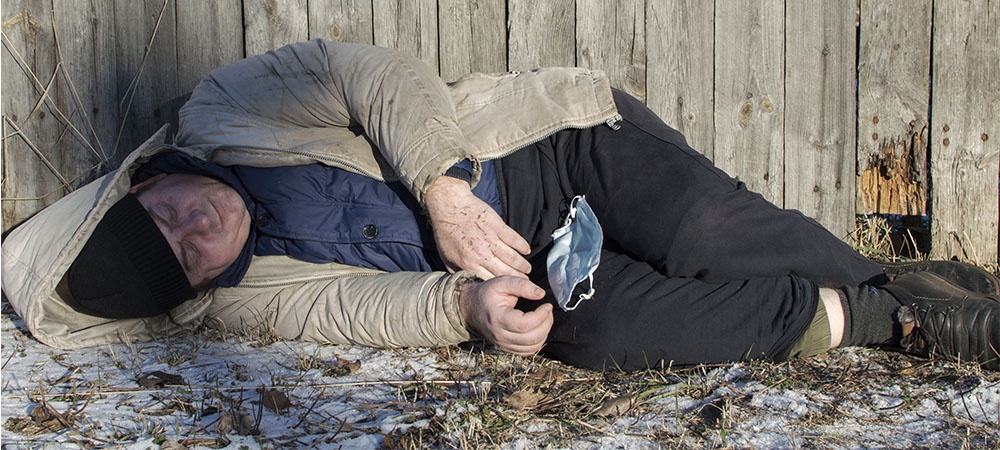Addiction In The Homeless Population
The Homeless Addict Stereotype
As a rule, when we picture a fiend, we think about a vagrant asking for cash. We partner vagrancy and habit, expecting that with one comes the other. This generalization is solid to such an extent that it is regularly how the destitute populace is portrayed in Television programs and motion pictures. There is the predominant thought that individuals who are destitute can’t deal with their own issues and that their compulsion is an indication of this disappointment. Individuals regularly state that they don’t care for offering cash to the destitute as they will simply utilize the cash on medications or liquor, and the destitute populace is additionally derided as contemptible. In spite of the fact that the extent of addicts inside the destitute populace is high, it is incorrect to state that all vagrants have habit issues. This generalization doesn’t help with regards to tending to the association between the destitute populace and compulsion.
How Prevalent is The Homeless Addiction Problem?
Most studies show that around 40% of the homeless population abuse drugs or alcohol. This is a large proportion of the homeless population, but when looking at the conditions in which they live, we can see why this might happen. The homeless in Canada are treated very poorly by the rest of society and are often stigmatized as being unworthy of our help. When looking at large cities, such as Toronto, we see that the homeless are often denied basic rights. Homeless individuals are often not given adequate help when it comes to living situations as shelters are overcrowded and often come with their own problems. It can be dangerous to stay in a shelter, and some find that living on the street is the best way to stay safe. Additionally, there are many health issues that can show up in the shelter system, such as bedbugs. With these different concerns, some of the homeless population choose to live on the streets rather than find a bed in a shelter, and in Canada, this can be extremely difficult.

Out in The Cold
Trying to survive the winter while living on the streets in Canada can be next to impossible. In places like Toronto, it is not uncommon to see tents being used by those living on the streets to protect themselves from the cold. There is a constant battle between the city and human rights activists about whether to allow such tents, and the homeless are stuck not knowing whether their makeshift shelter will still be standing the next day. When taking a gander at how we treat the destitute in our general public, it tends to be anything but difficult to perceive any reason why so many may go to medications or liquor as a method for dealing with stress. Not exclusively can the substances help heat up the body in the evenings when the temperature is too low to even consider surviving, it can take your psyche off your difficulties, regardless of whether only for some time. It may very well be hard enough for individuals with no lodging issues to stay away from the utilization of medications and liquor, so the possibility that individuals without homes ought to by one way or another have the option to get by without the guidance of a substance is ridiculous.
Homelessness and Mental Illness
Just like in the regular population, many people without a home suffer from mental illness. This can make it difficult for them to function in society, especially if they do not have a proper support system. And just as in the regular population, if these mental health issues go unchecked, then addiction can follow. The homeless population often has many health concerns that they are unable to get medical attention for, as it can be difficult to gain access to services when you have no fixed address. For example, if someone were to become homeless, they may no longer be able to get the help they need for their depression. This would then cause them to seek other means of medicating their mental health issues, and alcohol is much cheaper than Zoloft. Once the individual establishes a connection between alcohol and relief of depression symptoms, they may find it almost impossible to stop drinking, and they become dependent on alcohol. Without any help from others, it can be virtually impossible to gain control of addictions and since homeless people usually lack support, the addiction can go on for years.
What is The Solution?
One way to help combat homelessness is by thinking differently about what the solutions should be. Many believe that in order to help homeless people regain their place in society, we must start by treating their mental health issues, including any addictions they might have. Homeless advocates are now seeing that this is putting the cart before the horse. The Home First movement is the idea that in order to combat homelessness, we need to address the living situation before we can move towards relieving any mental health issues the homeless person may suffer from. The idea is that by giving the person a steady place to live, they will have the resources they need to combat things such as addiction issues. If that one need is not taken care of, the person is unable to gain the services needed to tackle their other issues. This type of program has been very successful at helping people’s re-entry to “normal” society and should be looked at when discussing issues within the homeless population.

Final Thoughts
As with most social issues, there are many factors that contribute to homelessness and addiction. There is no easy solution to the substance abuse issues seen in the homeless population, but then again, there is no easy solution to the substance abuse issue in “normal” society. It is important to remember that homeless people are people first and have the same problems as those who have homes. We should not stereotype the homeless as being addicts, as this can further marginalize them. What we need to know when seeing a homeless person struggling with addiction is that it is not their “fault.” Humans are flawed, no matter their living situation, and if we can have compassion for the homeless population, perhaps part of the problem will be fixed.



